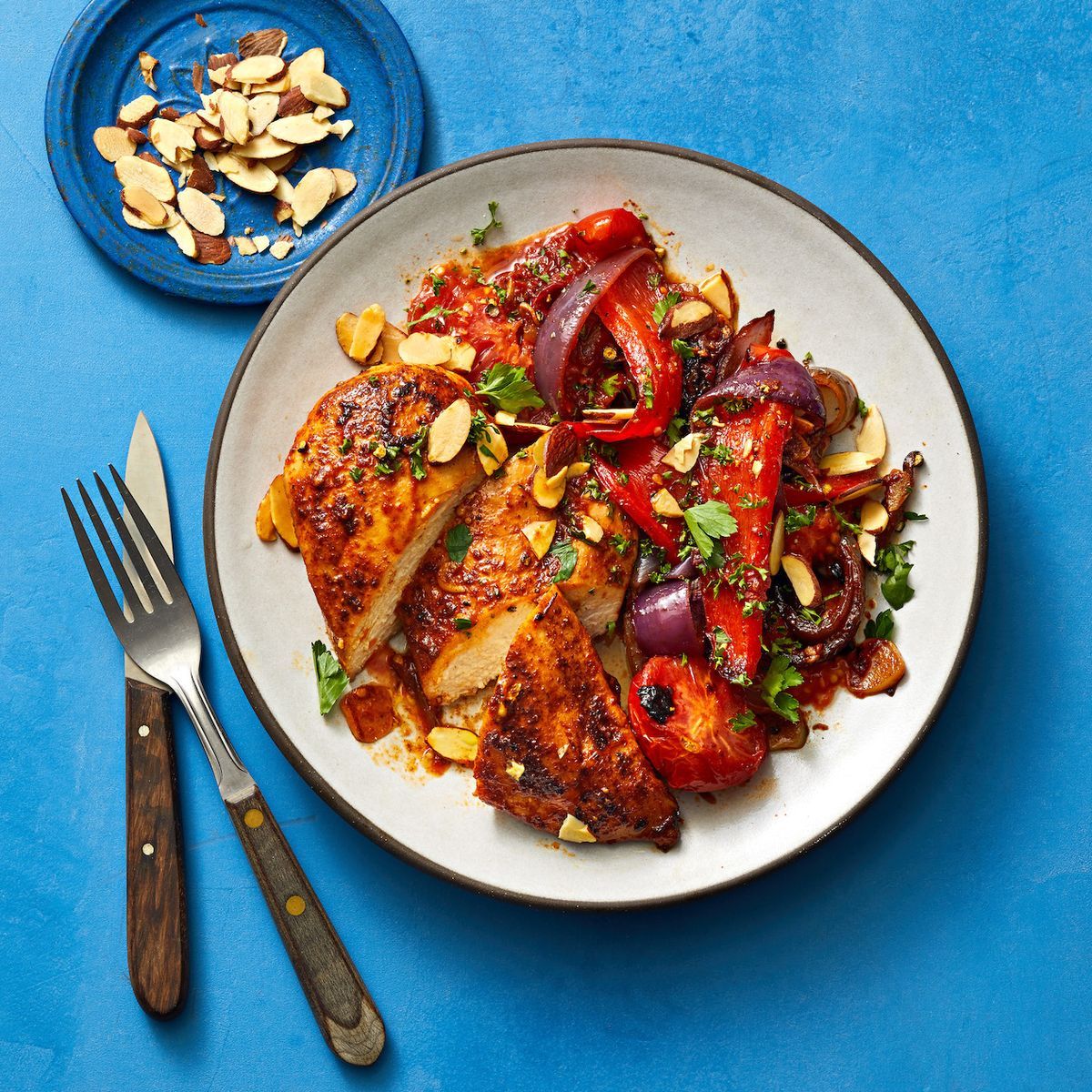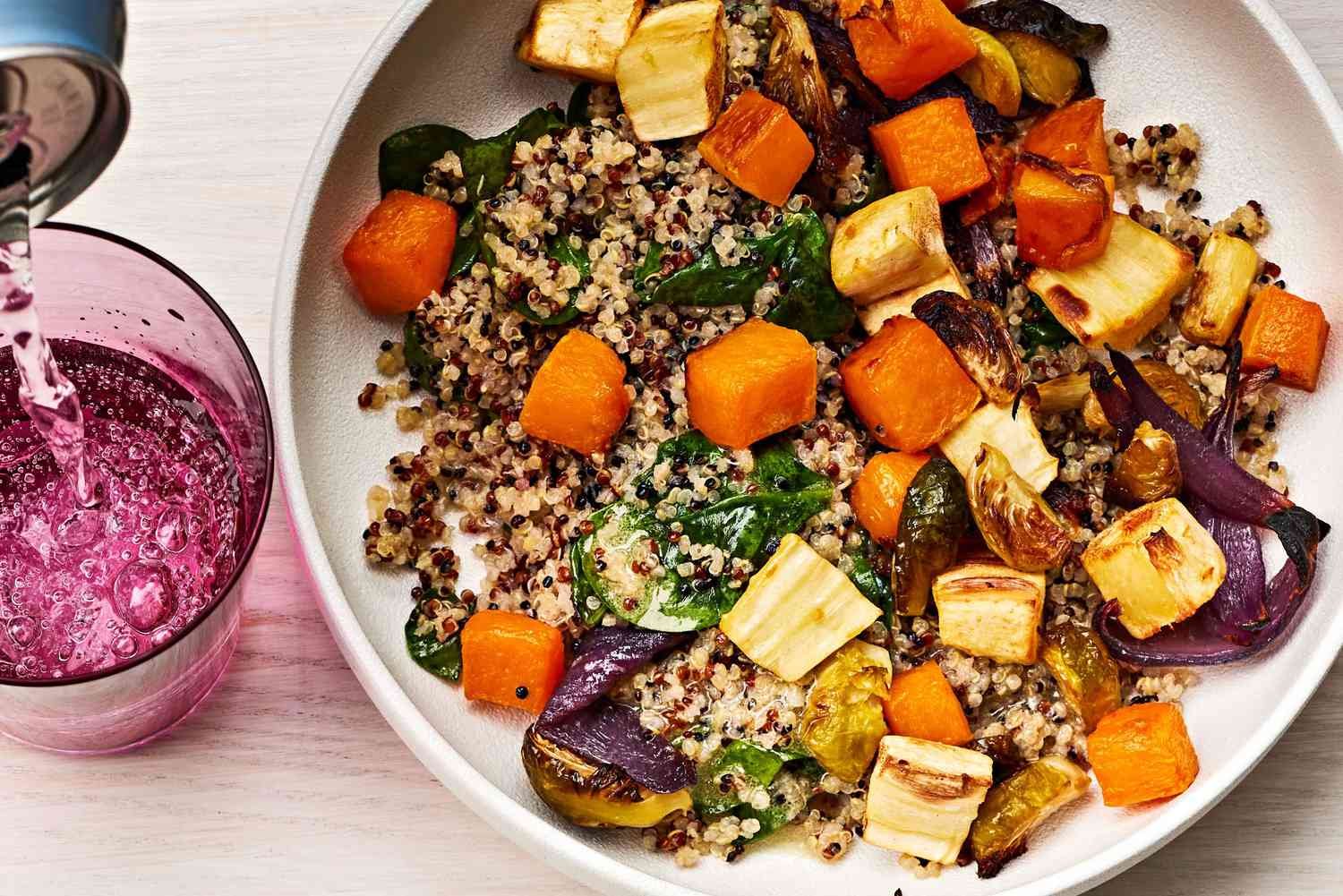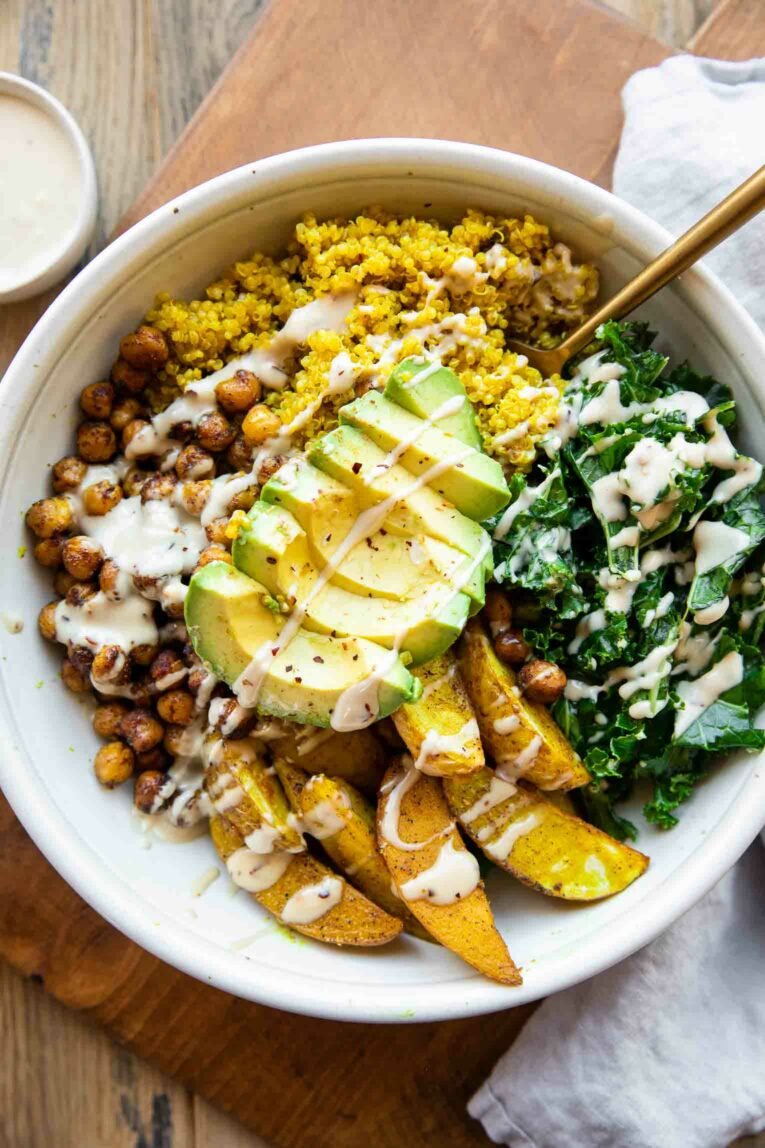Are you ready to transform your dinner routine into a feast of flavors without the guilt? Imagine meals that tantalize your taste buds, keep your waistline in check, and boost your energy levels.
If you’re looking to enjoy satisfying dinners that are both healthy and low in fat, you’ve come to the right place. This guide is crafted especially for you, offering delicious options that are as easy to prepare as they are delightful to eat.
Dive in, and discover how you can enjoy your evening meals guilt-free while nourishing your body with everything it craves. Stay with us as we explore the world of healthy, low-fat dinners that promise to be anything but boring.
Benefits Of Low Fat Meals
Choosing low-fat meals for dinner offers numerous health benefits. These meals can enhance your well-being and support a healthy lifestyle. By focusing on low-fat options, you can improve heart health, maintain a healthy weight, and boost your energy levels.
Improved Heart Health
Low-fat meals help keep your heart healthy. They reduce cholesterol levels and lower blood pressure. This minimizes the risk of heart disease. A heart-healthy diet supports overall cardiovascular health. This means a longer, healthier life.
Weight Management
Eating low-fat meals aids in weight management. Fewer calories from fat help maintain or lose weight. This leads to a healthier body and increased confidence. A balanced diet with low-fat meals helps control weight effectively.
Increased Energy Levels
Low-fat meals provide sustained energy throughout the day. These meals often include fruits, vegetables, and lean proteins. Such foods offer essential nutrients without excess calories. This results in improved energy levels and better focus.
Better Digestive Health
Low-fat meals promote better digestion. They often include fiber-rich foods. Fiber aids in digestion and prevents constipation. A diet with low-fat meals supports a healthy digestive system.
Reduced Risk Of Chronic Diseases
Eating low-fat meals can reduce the risk of chronic diseases. Diseases like diabetes and obesity are linked to high-fat diets. By choosing low-fat options, you lower this risk. A healthier diet leads to a healthier life.
Key Ingredients For Healthy Dinners
Creating healthy low-fat meals for dinner doesn’t have to be a daunting task. By choosing the right ingredients, you can whip up delicious meals that are both satisfying and nutritious. Let’s dive into the key ingredients that make healthy dinners a breeze. Whether you’re cooking for yourself or your family, these ingredients will make your meals wholesome without compromising on flavor.
Lean Proteins
Lean proteins are crucial for a nutritious dinner. They help you feel full and support muscle growth. Consider adding chicken breast, turkey, or tofu to your meals.
These choices are lower in fat compared to red meats. They’re versatile too—grill them, bake them, or stir-fry them for a delightful dish.
Personally, I find that grilling chicken breast with a sprinkle of herbs and lemon juice brings out amazing flavors. What’s your favorite way to prepare lean protein?
Whole Grains
Whole grains are a fantastic addition to any dinner. They provide fiber and keep your energy levels steady. Think brown rice, quinoa, or whole wheat pasta.
These grains are not only filling but also easy to prepare. A serving of quinoa can be cooked in just 15 minutes.
I once swapped out white rice for quinoa in my stir-fry, and the nutty flavor was a pleasant surprise. Have you tried experimenting with whole grains in your meals?
Fresh Vegetables
Vegetables are the backbone of a healthy dinner. They are packed with vitamins and minerals. Broccoli, spinach, and bell peppers are excellent choices.
These colorful veggies can be steamed, roasted, or sautéed to add vibrancy to your plate. They complement any protein and grain combo perfectly.
When I started adding roasted bell peppers to my dishes, the sweetness elevated the entire meal. Which vegetable do you love adding to your dinners?
Healthy Fats
Healthy fats are essential for a balanced diet. They enhance flavor and provide satiety. Opt for avocados, olive oil, or nuts.
These fats can be used in moderation to enrich your meals without overloading on calories. A drizzle of olive oil over roasted vegetables is simply divine.
Using avocados as a spread on my turkey sandwich was a game-changer for me. How do you include healthy fats in your dinner?
By mixing these key ingredients, you can create meals that are both delicious and nourishing. Remember, healthy eating is all about balance and variety. Let your dinner plate be a canvas for creativity and wellness. What’s your next healthy dinner idea?
Quick And Easy Recipes
Finding time to cook healthy meals can be challenging. Quick and easy recipes come to the rescue. They offer nutritious options without long prep times. Perfect for busy evenings. Plus, these meals are low in fat. That means they’re great for your health. Let’s dive into some delicious choices.
Vegetable Stir-fry
Fresh vegetables make a stir-fry vibrant. Choose colorful options like bell peppers and broccoli. Slice them into thin pieces. Use a non-stick pan for cooking. Add a splash of soy sauce and ginger. Stir everything for 5 to 7 minutes. Serve hot over brown rice. It’s simple, tasty, and healthy.
Grilled Lemon Herb Chicken
Grilled chicken is a lean protein source. Marinate with lemon juice and fresh herbs. Think rosemary and thyme. Let it sit for 20 minutes. Grill on medium heat for 10 minutes each side. Check the juices run clear. Serve with a side salad. This meal is packed with flavor and nutrition.
Baked Salmon With Asparagus
Salmon is rich in omega-3 fatty acids. Place salmon fillets and asparagus on a baking tray. Drizzle olive oil and lemon juice. Sprinkle salt and pepper. Bake at 400°F for 15 minutes. The fish should flake easily. Pair with quinoa for a hearty dish. A perfect blend of health and taste.
Vegetarian Options
Explore healthy low-fat vegetarian dinners with vibrant salads, hearty soups, and flavorful stir-fries. These meals offer tasty, nutritious options perfect for health-conscious diners. Enjoy satisfying flavors without excess fat.
When you think about dinner, do you envision rich, creamy dishes that leave you feeling sluggish? What if you could enjoy a meal that’s both satisfying and light on your waistline? Vegetarian options for dinner offer a delightful way to enjoy low-fat meals without sacrificing taste. These meals are not only packed with nutrients but also easy to prepare. Whether you’re a seasoned vegetarian or just looking to incorporate more plant-based meals into your diet, these recipes are sure to inspire you. ###Quinoa And Black Bean Salad
Quinoa and black bean salad is a refreshing dish that’s both filling and full of flavor. Quinoa is rich in protein and fiber, making it a perfect base for a wholesome meal. Black beans add a hearty texture and are a great source of plant-based protein. To prepare this salad, start by cooking quinoa according to the package instructions. While it’s cooling, rinse and drain a can of black beans. Combine the quinoa and black beans in a large bowl. Add diced tomatoes, chopped cilantro, and a squeeze of fresh lime juice. Season with salt and pepper. You can even add a pinch of cumin for an extra kick. This dish is perfect for a quick dinner or even as a packed lunch for the next day. How do you feel about exploring new grains in your meals? ###Zucchini Noodles With Tomato Sauce
Zucchini noodles, or zoodles, are a fantastic low-carb alternative to traditional pasta. They are incredibly easy to make and absorb flavors beautifully. If you’ve never tried them, you might be surprised by how deliciously satisfying they can be. Start by spiralizing fresh zucchinis to create your noodles. If you don’t have a spiralizer, a simple vegetable peeler will do the trick. Lightly sauté the zoodles in a pan with a bit of olive oil for a few minutes. For the sauce, use fresh tomatoes or a low-sodium canned option. Simmer with garlic, basil, and a pinch of oregano. Pour the sauce over the zoodles and garnish with fresh basil leaves. Does this sound like a dish that could change your dinner routine? These vegetarian options not only help you maintain a low-fat diet but also introduce variety and excitement to your meals. Give them a try and see how they can transform your dining experience!Meal Prep Tips
Preparing healthy low-fat meals for dinner can feel daunting. But with the right meal prep tips, it becomes manageable and rewarding. Meal prep helps save time during busy weekdays. It also keeps your diet on track with nutritious options. Embrace the art of planning and organizing your meals. The result will be both delicious and healthful.
1. Choose Simple Recipes
Select recipes that are easy to make. Opt for dishes with few ingredients. This simplifies the process and reduces prep time. Simple recipes are also less intimidating for beginners. Focus on meals with lean proteins and lots of vegetables.
2. Plan Your Weekly Menu
Create a menu for the week. Decide on meals ahead of time. This helps streamline grocery shopping. It ensures you have everything you need. A planned menu reduces stress and indecision. It also prevents last-minute unhealthy choices.
3. Prep Ingredients In Advance
Wash and chop vegetables ahead of time. This makes cooking faster and easier. Pre-cooked grains like quinoa can save time. Store ingredients in clear containers. This keeps your fridge organized and accessible.
4. Use Proper Storage Techniques
Store meals in airtight containers. This keeps food fresh longer. Label containers with dates to track freshness. Use portion-sized containers for easy grab-and-go meals. Proper storage prevents food waste and saves money.
5. Cook In Batches
Prepare large quantities of food at once. Freeze or refrigerate portions for later use. Batch cooking saves time and effort. It ensures you always have healthy meals available. Cooking in batches also makes meal prep less frequent.

Credit: www.tasteofhome.com
Balancing Flavor And Nutrition
Balancing flavor and nutrition is key in crafting healthy low-fat meals for dinner. Fresh vegetables and lean proteins offer delicious taste while maintaining nutritional value. Simple spices and herbs can enhance flavor without adding extra fat.
Balancing flavor and nutrition in your dinner can seem like a daunting task. You want a meal that’s both delicious and beneficial for your health. The good news is, it’s entirely possible to enjoy flavorful dishes while keeping them low in fat. With a few smart choices, you can have meals that satisfy your taste buds and nourish your body.Understanding Flavor Profiles
The key to a tasty, low-fat meal lies in understanding flavor profiles. Many people assume that low-fat means bland. This isn’t true. Use herbs, spices, and citrus to add vibrant flavors without relying on fats. Experiment with spices like paprika or cumin for a smoky taste. Try adding lemon or lime juice for a zesty kick.The Role Of Fresh Ingredients
Fresh ingredients are crucial for flavor and nutrition. They are often more nutrient-dense than processed foods. Opt for fresh vegetables, lean proteins like chicken or fish, and whole grains. These elements can make your meals more flavorful and nutritious. Consider how a fresh tomato tastes compared to canned ones. Fresh produce brings a natural sweetness and crunch that canned or frozen foods might lack.Smart Cooking Techniques
Cooking techniques can make a big difference in flavor and fat content. Instead of frying, try grilling, steaming, or baking. These methods preserve flavor without excess fat. Grilling can give a smoky taste, while steaming maintains the natural flavors of vegetables. Baking lets spices infuse into the dish beautifully. Think about the last time you grilled vegetables; the charred edges and soft insides created a delightful texture and taste.Using Healthy Substitutes
Healthy substitutes can enhance flavor while reducing fat. Use yogurt instead of cream in sauces for a tangy twist. Swap out butter for olive oil for a heart-friendly option. Yogurt adds creaminess without the heavy fat content. Olive oil brings a subtle richness and enhances the natural taste of other ingredients. How often have you tried replacing butter with olive oil in a recipe? You might be surprised at how much it can elevate the dish.Making It Personal
Personalizing your meals can make a huge difference. Tailor dishes to your preferences while keeping them healthy. If you love spicy food, add chilies. If you prefer something savory, use garlic and rosemary. What are your favorite flavors? Incorporating them can make you look forward to your meals, and you’ll be less tempted to reach for unhealthy options. Do you remember a time you adjusted a recipe to suit your taste? That’s the beauty of cooking; it’s a creative process that should reflect your individuality. Balancing flavor and nutrition isn’t about sacrifice; it’s about creativity and making smart choices. What changes will you make in your kitchen today?Incorporating Seasonal Ingredients
Embrace the flavors of the season with healthy, low-fat dinner options. Fresh vegetables and lean proteins create satisfying meals. Experiment with herbs and spices for delicious, nutritious dishes.
Eating healthy low-fat meals doesn’t mean sacrificing flavor or creativity, especially when you bring seasonal ingredients into your kitchen. Seasonal produce not only adds freshness but also enhances the taste and nutritional value of your meals. Plus, buying what’s in season can be easier on your wallet and the environment. Let’s dive into how you can make the most of seasonal ingredients for your dinner.Understanding Seasonal Produce
Choosing the right seasonal ingredients can make a big difference in your meals. Think about the vibrant colors and rich flavors of summer tomatoes or the earthy taste of fall squash. Seasonal produce is often fresher, which means more nutrients and better taste. Next time you’re at the store or farmers’ market, pay attention to what’s available. What catches your eye?Spring Delights: Asparagus And Peas
Spring brings a bounty of fresh produce like asparagus and peas. Asparagus is low in calories and packed with vitamins A, C, and K. Try grilling or steaming it for a simple side dish. Peas add a pop of sweetness and can be tossed into salads or stir-fries. You can also blend peas into a light soup for a refreshing start to your meal.Summer Bounty: Tomatoes And Zucchini
Summer is the perfect time to enjoy juicy tomatoes and crisp zucchini. Tomatoes are rich in antioxidants and can be used in salads, sauces, or simply sliced with a sprinkle of salt. Zucchini is versatile and low in fat. Spiralize it for a noodle substitute or grill it for a tasty side. How could you use these in your next meal?Fall Harvest: Squash And Apples
As the weather cools, squash and apples take center stage. Squash varieties like butternut and acorn are hearty and satisfying. Roast them with a bit of olive oil for a flavorful dish. Apples add a natural sweetness to salads or can be baked for a healthy dessert. Why not try adding diced apples to your next salad for a surprising twist?Winter Warmers: Kale And Sweet Potatoes
Winter is ideal for hearty greens like kale and nutrient-rich sweet potatoes. Kale is a superfood that works well in salads or sautéed as a side. Sweet potatoes are a fantastic source of fiber and vitamins. Roast them or mash them as a comforting addition to your meal. Have you ever tried making a kale and sweet potato frittata?Creating A Seasonal Meal Plan
Planning your meals around seasonal produce can be both fun and rewarding. Start by listing the seasonal ingredients available in your area. Think about how you can incorporate them into your favorite dishes or try new recipes. A seasonal meal plan not only keeps your diet varied but also makes cooking an exciting adventure. What seasonal ingredient will you try next? Embrace the change of seasons in your kitchen. Explore the flavors and benefits of seasonal ingredients. Remember, eating healthy doesn’t have to be boring. With a little creativity, every meal can be an opportunity to enjoy the best nature has to offer.:max_bytes(150000):strip_icc()/Chipotle-Chicken-Quinoa-Burrito-Bowl-b56e445cf7b944ae99794fdbe22eb296.jpg)
Credit: www.eatingwell.com
Common Mistakes To Avoid
Choosing processed low-fat products can lead to added sugars and sodium. Ignoring portion sizes might result in overeating. Avoid skipping essential nutrients like proteins and fiber for balanced meals.
Eating healthy low-fat meals for dinner is a great way to maintain a balanced diet and achieve your health goals. However, many people unknowingly make mistakes that can sabotage their efforts. Let’s dive into some common pitfalls and learn how to avoid them. You might find these insights surprisingly simple yet profoundly effective.Skipping Essential Fats
Cutting out all fats might seem like the quickest way to eat low-fat, but your body still needs some fats to function properly. Essential fats, like omega-3s found in fish and nuts, support brain health and other vital functions. Without them, you might feel sluggish and deprived. Next time you prepare dinner, consider adding a small portion of healthy fats to your meal.Overlooking Portion Sizes
A low-fat meal doesn’t automatically mean you can eat unlimited quantities. Portion control is key to maintaining a balanced diet. Even low-fat foods can lead to weight gain if consumed in large amounts. Use a smaller plate or divide your meal into sections to help manage your portions effectively.Choosing Processed Low-fat Foods
Packaged foods labeled as “low-fat” can be misleading. Manufacturers often add sugar or other unhealthy ingredients to compensate for the loss of flavor when fat is removed. Instead, focus on whole, unprocessed foods to ensure you’re truly eating healthily. Fresh fruits, vegetables, and lean proteins are great choices for a satisfying dinner.Neglecting Protein
Protein is crucial for maintaining muscle and keeping you full longer. Skipping it can leave you feeling hungry soon after your meal. Include lean proteins like chicken, tofu, or legumes in your dinner to keep your energy levels stable. Have you ever wondered why you’re hungry shortly after eating? It might be the lack of protein in your meal.Not Balancing Your Plate
A well-balanced meal includes a mix of carbohydrates, proteins, and fats. Focusing solely on cutting fat can leave your meals unbalanced, affecting your overall nutrition. Aim for a colorful plate with a variety of nutrients to support your health. Does your dinner plate look like a rainbow? If not, it might be time to rethink your meal composition. Every step you take towards avoiding these common mistakes brings you closer to healthier, more satisfying dinners. Remember, it’s not just about eating less fat but making informed choices that benefit your overall well-being. What changes will you make to your dinner routine tonight?
Credit: www.goodhousekeeping.com
Frequently Asked Questions
What Are Some Good Low-fat Dinners?
Try grilled chicken breast with steamed vegetables. Enjoy baked salmon with quinoa. Opt for turkey stir-fry with brown rice. Savor vegetable soup with lentils. Choose tofu salad with mixed greens.
What Is The Healthiest Low-fat Meal?
Grilled chicken salad with mixed greens, cherry tomatoes, and balsamic dressing is a healthy low-fat meal option. Pair it with quinoa or brown rice for added nutrition. Incorporate leafy greens, lean proteins, and colorful vegetables to maximize health benefits while keeping fat content low.
What Is The Healthiest Dinner For Weight Loss?
A balanced dinner for weight loss includes lean protein, whole grains, and vegetables. Opt for grilled chicken, quinoa, and steamed broccoli. Include healthy fats like avocado or olive oil. Drink water or herbal tea instead of sugary drinks. This meal supports weight loss and provides essential nutrients.
What Is The Healthiest Meal To Eat For Dinner?
A balanced dinner includes lean protein, whole grains, and vegetables. Opt for grilled chicken, quinoa, and steamed broccoli. This combination provides essential nutrients, supports digestion, and maintains energy levels. Adding a salad with mixed greens and a light vinaigrette can enhance the meal’s nutritional value.
Conclusion
Healthy low-fat dinners are easy and delicious. They support a balanced lifestyle. Eating nutritious meals can boost your energy levels. You feel better and stronger each day. Explore new recipes that suit your taste. Experiment with fresh ingredients often. Enjoy meals that are both tasty and light.
Savor the flavors without guilt. Making healthy choices can be fun and rewarding. Keep trying different low-fat options. Your health will thank you. Remember, small changes lead to big results. Eating well is a journey, not a race. Stay committed and enjoy every meal.





